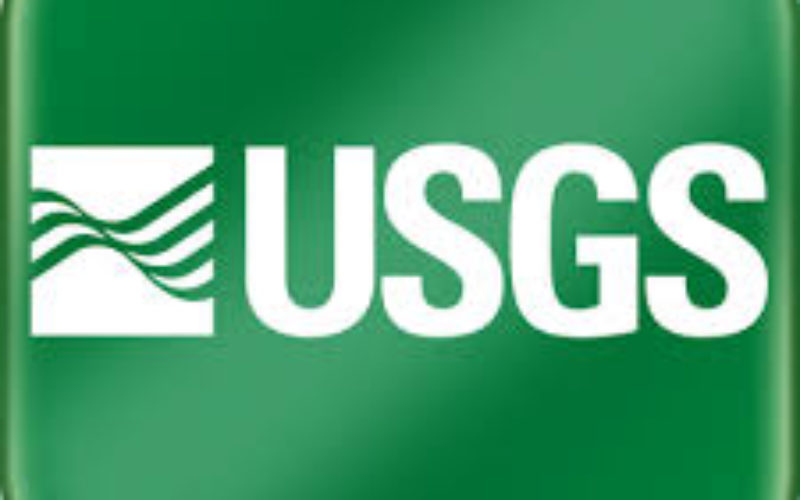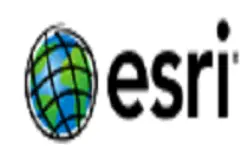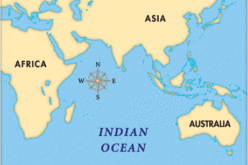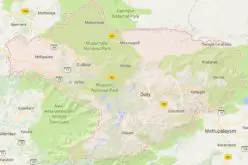Reflects the ongoing commitment to scientific discovery and innovation to support decision making for critical societal needs
 WASHINGTON—The President’s fiscal year (FY) 2017 budget request for the U.S. Geological Survey reflects the USGS’s vital role in addressing some of the most pressing challenges of the 21st Century by advancing scientific discovery and innovation. The $1.2 billion FY 2017 request supports USGS’ ability to maintain the diversity of its scientific expertise so it can continue the large-scale, multi-disciplinary investigations it is uniquely qualified to carry out and provide impartial science to resource managers and planners.
WASHINGTON—The President’s fiscal year (FY) 2017 budget request for the U.S. Geological Survey reflects the USGS’s vital role in addressing some of the most pressing challenges of the 21st Century by advancing scientific discovery and innovation. The $1.2 billion FY 2017 request supports USGS’ ability to maintain the diversity of its scientific expertise so it can continue the large-scale, multi-disciplinary investigations it is uniquely qualified to carry out and provide impartial science to resource managers and planners.
“This is a smart, innovative and forward-looking budget that invests in Interior’s key missions – now and in the future – so we can continue to serve the American people,” said Secretary of the Interior Sally Jewell. “The President’s budget provides targeted investments to create economic opportunities by growing our domestic energy portfolio, building climate resilient communities, and revitalizing America’s national parks as we mark their 100th anniversary. Consistent with the President’s abiding commitment to Indian Country, this budget provides critical support for Tribal self-determination and economic advancement, including a historic transformation of the Bureau of Indian Education school system to help improve education for Indian children.”
“Our diversity of scientific expertise uniquely positions the USGS to help address today’s critical natural resource issues,” said Suzette Kimball, USGS Director. “From earthquakes to invasive species, from water quality to critical minerals, USGS science plays a pivotal role and this budget request supports that important mission.”
The FY 2017 budget request allows the USGS to advance priorities set forth in the USGS Science Strategy Plans, such as: developing the ground system for Landsat 9; informing the management of water for the 21st century; understanding climate and land-use change; investigating new and emerging invasive species and disease; improving science for rapid disaster response and prevention; developing enhanced mapping tools and products; advancing landscape-level sciences; conducting critical mineral and energy resources research; and pursuing studies that protect environmental health.
This budget is also designed to keep core USGS science programs intact. These programs provide valuable services to the Nation and include science that helps decision makers minimize loss of life and property, manage natural resources, and protect and enhance our quality of life.
Key increases in the FY 2017 budget are summarized below. For more detailed information on the President’s FY 2017 budget, visit the USGS Budget, Planning, and Integration website.
Water Resources
The FY 2017 USGS budget request provides an increase of $17.3 million above the FY2016 enacted level for Water Resources research for a total of $228 million. The budget requests $60.2 million for Water Resources programs to use in matching State, municipality, and Tribal contributions for cooperative water efforts. This includes a $4 million increase under the Water Availability and Use Science Program to develop a near real-time assessment of regional and national water-use trends during drought periods. Other increases totaling $8.1 million would integrate water information from multiple agencies, provide state water resource agencies with the necessary base data at the resolution needed for decision making, and would develop better methods for sampling, estimating, aggregating, and presenting water use data. This increase also supports efforts to assess water budgets across snow-dominated regions of the Nation; including assessing systems, anticipating future changes, and extrapolating from monitored to unmonitored locations across critical landscapes in the Arctic.
The USGS budget also includes a $1.4 million increase for the Groundwater and Streamflow Information Program to expand the use of flood inundation mapping and rapidly deployable streamgages, which provide crucial data to help manage flood response. In addition, the increase will also target the use of enhanced streamflow information to help decision makers support tribal water needs.
The National Water Quality Assessment Program increase of $3.5 million will enhance long-term surface- and groundwater-quality monitoring in Cycle 3 of the Program. This increase will further support cooperative and urban-waters activities by providing streamflow and water-quality data to state and local partners. The data are used to plan economic revitalization and restore urban waters. Additionally, the NAWQA increase funds research to understand the effects of unconventional oil and gas extraction on streams and groundwater.
Natural Hazards
The FY 2017 USGS budget request for Natural Hazards includes a $10.7 million increase above the FY 2016 enacted level for a total of $149.7 million. It funds science to help protect the Nation’s safety, security, and economic well-being, to make the United States more resilient to natural hazards, and to develop user driven tools to make communities safer.
The Earthquake Hazards Program increase of $1.7 million would fund induced seismicity research related to unconventional oil and gas production and improve earthquake monitoring by assuming long-term operations of about 160 seismographs in the Central and Eastern U.S. An additional $860,000 would fund sensors at select Global Seismographic Network sites. The budget continues funding of $8.2 million to implement a limited earthquake early warning system on the West Coast by expanding seismometer coverage outward around major urban areas, integrating fault slip data into the system, developing and testing the system to improve reliability, and end-user education efforts on how to understand and use alerts.
The Natural Hazards budget increase includes a Coastal and Marine Geology Program increase of $5.8 million, which would benefit coastal communities, including those in the Arctic, dealing with sea-level rise, severe storms, and melting permafrost. The increase would also fund research and modeling to apply findings from Hurricane Sandy to other parts of the U.S. coastline.
An increase of $1.7 million for the Geomagnetism Program would enhance USGS monitoring of electrical currents in the Earth’s crust, and improve global magnetic field data. This monitoring by USGS is an integral component of the National Space Weather Strategy to protect against the harmful effects of magnetic storms. The Sun is always emitting a wind of electrically charged particles, but when a large sunspot emerges on the face of the Sun, there is an increased chance for abrupt emission of strong solar wind and a magnetic storm. An intense magnetic storm can affect many technological systems. In particular, storms can overload and interfere with the operation of electric-power grids on the Earth, sometimes causing blackouts.
In addition, an increase of $0.5 million in the Landslide Hazards Program would expand post-wildfire debris-flow hazard assessments and bolster the USGS capacity to respond to landslide crises.
Energy and Minerals Resources, and Environmental Health
The FY 2017 budget request for Energy and Minerals Resources, and Environmental Health (EMEH) is $5 million above the FY 2016 enacted level, for a total of $99.5 million. This includes a $1.6 million increase to the Mineral Resources Program for identifying and evaluating new sources of critical minerals and for new science and tools to reduce the impacts of minerals extraction, production, and recycling on the global environment and human health. The Energy Resources Program’s proposed $1.4 million increase includes funds for unconventional oil and gas (UOG) research and assessments, evaluation of waters produced during UOG development, and assessments of undiscovered UOG on Alaska’s North Slope. It funds scientific data-gathering needed for other domestic assessments of shale and tight oil and gas, geothermal energy research to support land management decisions about alternative energy permitting on Federal lands, and the application of an ecosystem servicesapproach to enhance resilience of coastal infrastructure and evaluate green infrastructure investments. These increases are partially offset by reductions to lower priority programs.
The increase includes an additional $3.1 million for Environmental Health research, with $1.3 million under the Contaminant Biology Program and $1.8 million under the Toxic Substances Hydrology Program. This research will assess potential biological effects of UOG on living organisms, including humans; study environmental contamination from spills and other releases of liquid and solid wastes from UOG development in West Virginia and North Dakota; and establish real-time water-quality monitoring along the northeast U.S. coast. These studies also will examine mercury and pesticide contamination in the Columbia River basin, and assess impacts of uranium mining in the Grand Canyon region. This research will inform decisions on new uranium mining in the Grand Canyon region.
Core Science Systems
The FY 2017 budget request for Core Science Systems is $6.8 million above the FY2016 enacted level, for a total of $118.4 million. Of the increase, $4.9 million would fund elevation data acquisition within the National Geospatial Program. This includes a $1.5 million increase to modernize mapping and collect ifsar (interferometric synthetic aperture radar) elevation data in Alaska. Improved mapping products are urgently needed in Alaska for aircraft navigation, since weather conditions deteriorate quickly and pilots frequently need to fly using only their instruments and GPS. It also includes $2.4 million to acquire lidar data (measuring distance by illuminating a target with a laser and analyzing the reflected light) and enhance landscape-scale 3-D maps for the Nation. Accelerating national elevation data coverage will also enable decision making to manage infrastructure and construction, provide more accurate and cost effective application of chemicals in farming, help to develop energy resources, and support aviation safety and vehicle navigation. The proposed increase also provides $1 million to collect lidar data along the U.S. coast. These data help to understand and mitigate the effects of coastal erosion and storm surge and support management of the Chesapeake Bay. An additional increase of $1 million would complete the National Hydrography Database at a 1:24,000 scale for the conterminous 48 states, Hawaii, and Puerto Rico. This achievement would enable full integration of hydrography and elevation data in support of water resource managers throughout the Nation. The overall increase for Core Science Systems also funds research addressing pollinators and drought response.
Ecosystems
The FY 2017 USGS budget request for Ecosystems is $13.7 million above the FY 2016 enacted level for a total of $173.9 million. This includes a $4.9 million increase to the Environments Program for critical landscapes such as sage steppe and the Arctic. The increase for sage steppe supports the priority needs of managers to design conservation and management strategies for greater sage grouse; address changing fire regimes, drought and shifting climates; control the spread of invasive cheatgrass; and restore and manage the sage steppe landscape. The Arctic increase would fund research to inform communities and land managers about changes in the Arctic and how they affect the broader physical environment: altering stream flows, disrupting ocean currents and the fisheries that depend on them, changing ecosystems, and affecting the availability of resources. The Environments Program increase also funds research to support drought and wildfire response.
The Ecosystems budget request includes $3.2 million in new funding for the Fisheries Program to develop decision support tools for water ecology, to assess Great Lakes fisheries, and to process offshore samples that could provide an early warning for harmful algal blooms.
The budget increase for Ecosystems includes an additional $2.5 million under the Invasive Species Program for research on new and emerging invasive species of national concern and to develop and improve tools for early detection and control, such as advanced molecular detection of sea lamprey and other invasive species found at very low densities in the field.
The proposed Ecosystems increase also includes a $1.7 million increase through the Status and Trends Program for research to maintain native pollinators that help the Nation maintain its food supplies.
Climate and Land-Use Change
The FY 2017 USGS budget provides an increase of $31.5 million over the FY 2016 enacted level for Climate and Land-Use Change (CLU) research, for a total of $171.4 million. This includes a $15.4 million increase to develop the Landsat 9 ground system to accelerate the satellite’s launch from 2023 to 2021 and to ensure access to the Nation’s remote sensing data. An increase of $2.2 million would enable access to Sentinel-2 satellite data from the European Space Agency, and an increase of $3 million would allow the development of the computing and online storage resources necessary to rapidly produce and widely disseminate a set of Landsat-based information products.
The CLU increase also provides an additional $4.2 million to better understand patterns and manage the effects of drought. This includes new tools to better manage water nationwide such as near real-time satellite based drought monitoring. Drought impacts on natural and agricultural systems that would be assessed include soil moisture, evapotranspiration rates, vegetation response, and other metrics. The research would help water managers identify the onset and severity of drought events and effectively allocate scarce water resources. The increase includes $1.8 million for new tools to improve water management nationwide and use remote sensing to support additional aspects of the National Water Census.
The budget includes a $1.5 million increase to establish a Great Lakes Climate Science Center to help increase and improve focus on the many climate-related natural resource challenges in the Great Lakes region and a $1.4 million increase would fund work with tribes on climate adaptation. In addition, $2.4 million would go to critical landscape studies in the Arctic to develop predictive models of changes to the environment from the conversion of ice and snow to water and to estimate glacier loss in Alaska and potential changes in freshwater input. A $500,000 increase would fund imagery datasets and analytical tools for improved coastal resource management and planning for resilient coastal landscapes and communities.
The proposed USGS budget is part of the President’s FY 2017 request of $13.4 billion for the Department of the Interior, reflecting his commitment to meet Federal trust responsibilities to Native Americans, conserve vital national landscapes across the Nation, support the next century of our public lands, and allow for responsible management of energy development on public lands and offshore areas. The Budget in Brief is online: www.doi.gov/budget and www.doi.gov/budget/2017/











